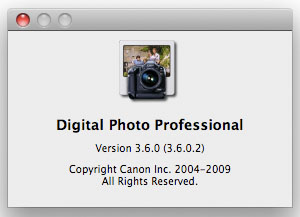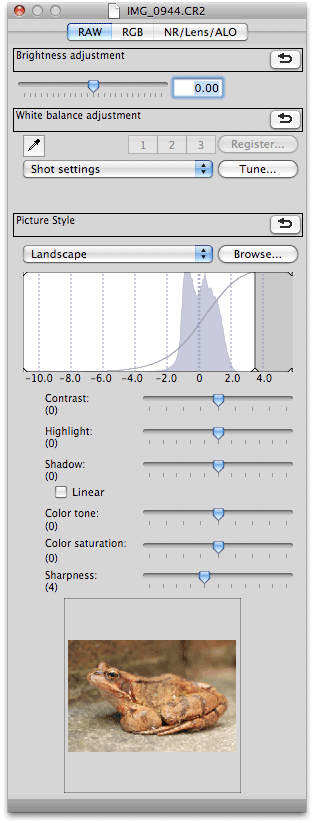 Canon has made the latest version of it's RAW image processing software digital photo professional [DPP] available for download, and it has new controls to deal with shadow and highlights in images separately.
Canon has made the latest version of it's RAW image processing software digital photo professional [DPP] available for download, and it has new controls to deal with shadow and highlights in images separately.It's a strange round of coincidences, but the firmware update for the PowerShot SX1 IS that we reported in February here on the blog meant that Canon needed to make a version of RAW image processing software available for the now RAW capable PowerShot, that version is 3.6.0.2 and can be downloaded from Canon's website along with the PowerShot SX1 IS firmware updater. You'll need a valid serial number for a PowerShot SX1 IS to get access to the files, and the kind folks at www.learnslr.com have one that works fine. Once at the site you'll find the DPP version 3.6 too, and this is what you really want for your EOS camera as it adds the shadow and highlight sliders to the RAW tab of the tool panel.
 This quick animation shows the effect of changing the shadow and highlight sliders to their maximum and minimum settings 5 and -5 respectively. In essence the highlight slider affects the shape of the upper part of the tone curve, watch the animation and particularly the tone curve in the histogram box as the different slider settings cycle through. Similarly the shadows setting adjusts the lower half of the tone curve without affecting the upper part. You can combine the effects of shadow and highlight sliders if needed. This is a real boon for DPP users who previously could only make the tone curve steeper or flatter in total, and will reduce the need for this kind of fix in Photoshop to be done to a whole image.
This quick animation shows the effect of changing the shadow and highlight sliders to their maximum and minimum settings 5 and -5 respectively. In essence the highlight slider affects the shape of the upper part of the tone curve, watch the animation and particularly the tone curve in the histogram box as the different slider settings cycle through. Similarly the shadows setting adjusts the lower half of the tone curve without affecting the upper part. You can combine the effects of shadow and highlight sliders if needed. This is a real boon for DPP users who previously could only make the tone curve steeper or flatter in total, and will reduce the need for this kind of fix in Photoshop to be done to a whole image.The only concern so far for EOS users could be that there is only DPP 3.6 available. Often DPP updaters need the matching EOS Utility ones, and for now there is no such download available. If you use EOS Utility for tethered shooting or remote camera control you may be better to wait, since surely with the imminent launch of the EOS 500D Canon will make a set of DPP and EOS Utility updaters available from their normal download sites.
-blabpictures-


1 comment:
This could be a big bonus. I normally fiddle the contrast and exposure controls in DPP to give a reasonable spread of highlight and shadow detail, and may then make a second exposure to pick out details that were out of reach in the first adjustment. Then I'll merge these in Photoshop.
Being able to adjust shadow and highlight independently may just save a lot of time (and memory in Photoshop).
Now if DPP had a rotation tool like Photoshop's measure and arbitrary rotate combo...
Post a Comment